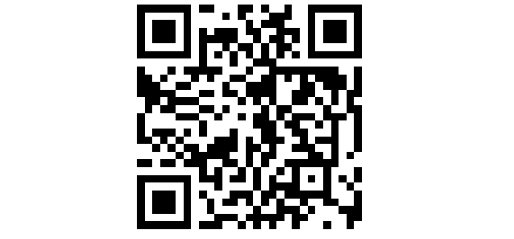Listen to a reading of this article:
❖
The western media are blaring headlines today about a “revelation” by the US government which does not actually reveal anything because it contains nothing but empty narrative fluff.
“U.S. reveals Russian plot to use fake video as pretense for Ukraine invasion,” reads a headline from CBS News.
“US reveals Russia may plan to create fake pretext for Ukraine invasion,” claims another from The Hill.
The claim is that the Russian government is plotting to fabricate a false flag operation using a graphic video with crisis actors in order to manufacture a pretense for a full-scale military invasion. State Department Spokesman Ned Price and AP reporter Matt Lee had an exchange about this claim at a Thursday press conference that you simply must watch if you haven’t already.
Please watch this video in which journalist Matt Lee accuses State Dept. spokesman Ned Price of veering into "Alex Jones territory" by making the claim that Russia plans to stage a "false flag" attack with "crisis actors" — Price then sneeringly calls Lee a Russian propagandist pic.twitter.com/5xMsbfWYgz
— Michael Tracey (@mtracey) February 3, 2022
Lee pointed out that claims about false flags and crisis actors were “getting into Alex Jones territory” and asked for the evidence for these extraordinary claims, which one would think is reasonable since extraordinary claims are generally considered to require extraordinary evidence. Price said that the evidence is “intelligence information that we have declassified,” and when Lee asked where the declassified information was Price looked at him like he just asked the stupidest question in the world and said “I just delivered it.”
The exchange goes on to reveal that Price really did mean that the completely unverified government assertion he’d just regurgitated is the evidence for the claim being made, meaning the evidence of the government assertion is that assertion itself.
Refusing to relent, Lee kept hammering the point that a completely unsubstantiated assertion is not the same as evidence especially given all the government assertions that have proved not to be true over the years.
“Matt, you said yourself you’ve been in this business for quite a long time,” Price replied. “You know that when we make information, intelligence information public, we do so in a way that protects sensitive sources and methods.”
Ahh, so the evidence is secret. It’s top secret evidence, to protect “sensitive sources and methods”. It sure is convenient how all the evidence of immensely consequential claims made by a government with an extensive history of lying is always far too sensitive for the public to be permitted to scrutinize.
This is the kind of evidence you can’t see. The evidence is invisible.
Secret, Invisible Evidence Of Russian Hacking Is Not Actually Evidence
"We can't share the evidence with you because the evidence is classified. It's secret evidence. The evidence is invisible."https://t.co/ulgVeTwIXR
— Caitlin Johnstone ⏳ (@caitoz) December 18, 2020
“You also know that we do so, we declassify information only when we’re confident in that information,” Price continued. “If you doubt the credibility of the U.S. government, of the British government of other governments and wanna, you know, find solace in information that the Russians are putting out, that’s for you do to.”
So if you doubt the credibility of governments with a very well-documented history of lying about exactly this sort of thing, you’re at best a useful idiot of Vladimir Putin and at worst a Kremlin operative yourself.
Yep, sounds legit. That’s definitely the sort of thing government officials say when they feel like they’re being truthful.
NSA whistleblower Edward Snowden tweeted about the exchange, “This is wild. The State Department’s spokesman can’t comprehend why the Associated Press feels the need to distinguish between a claim and a fact, and becomes visibly offended—and then angered—by the suggestion that his claims may require evidence to be accepted as credible.”
Wild indeed. Assertions are not evidence. A government declassifying itself making an unsubstantiated assertion is not “declassifying” anything. This is not the sort of behavior anyone would accept from anyone else, except perhaps a televangelist or a cult leader, but it’s already being treated as truth by US and British politicians.
"Declassifying" yourself making a claim is not declassifying anything. Assertions are not evidence. It's bat shit insane how the US government will claim it is "declassifying" information that amounts to nothing more than US government assertions and people just accept that. https://t.co/iNm2kao2in
— Caitlin Johnstone ⏳ (@caitoz) February 3, 2022
If I got on here for example and began drumming up publicity with claims that I have evidence that extraterrestrials are visiting this planet, and then after racking up millions of views and lots of publicity my evidence turned out to be a video clip of me saying “Extraterrestrials have been visiting this planet,” I would be called a liar, a scammer, and a clickbait grifter, and rightly so. I could then claim that I can’t provide any further evidence beyond my own assertion without compromising my sensitive sources and methods, but I’d still quite rightly be called a liar, a scammer, and a clickbait grifter.
But if I’m the most powerful institution in the world and have an extensive history of lying about exactly the sort of claim I just made, that’s considered fine and normal within the mainstream western orthodoxy.
Wild. Just wild.
_______________________________
My work is entirely reader-supported, so if you enjoyed this piece please consider sharing it around, following me on Facebook, Twitter, Soundcloud or YouTube, or throwing some money into my tip jar on Ko-fi, Patreon or Paypal. If you want to read more you can buy my books. The best way to make sure you see the stuff I publish is to subscribe to the mailing list for at my website or on Substack, which will get you an email notification for everything I publish. Everyone, racist platforms excluded, has my permission to republish, use or translate any part of this work (or anything else I’ve written) in any way they like free of charge. For more info on who I am, where I stand, and what I’m trying to do with this platform, click here.
Bitcoin donations:1Ac7PCQXoQoLA9Sh8fhAgiU3PHA2EX5Zm2
This post was originally published on Caitlin Johnstone.










